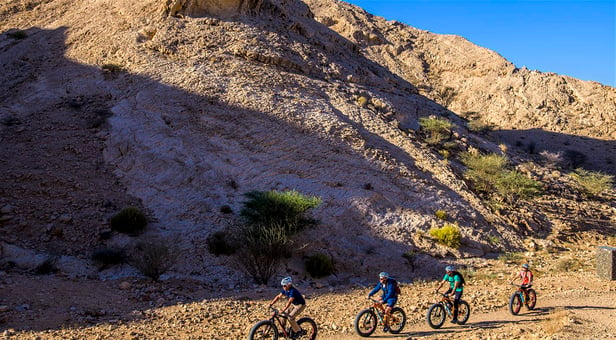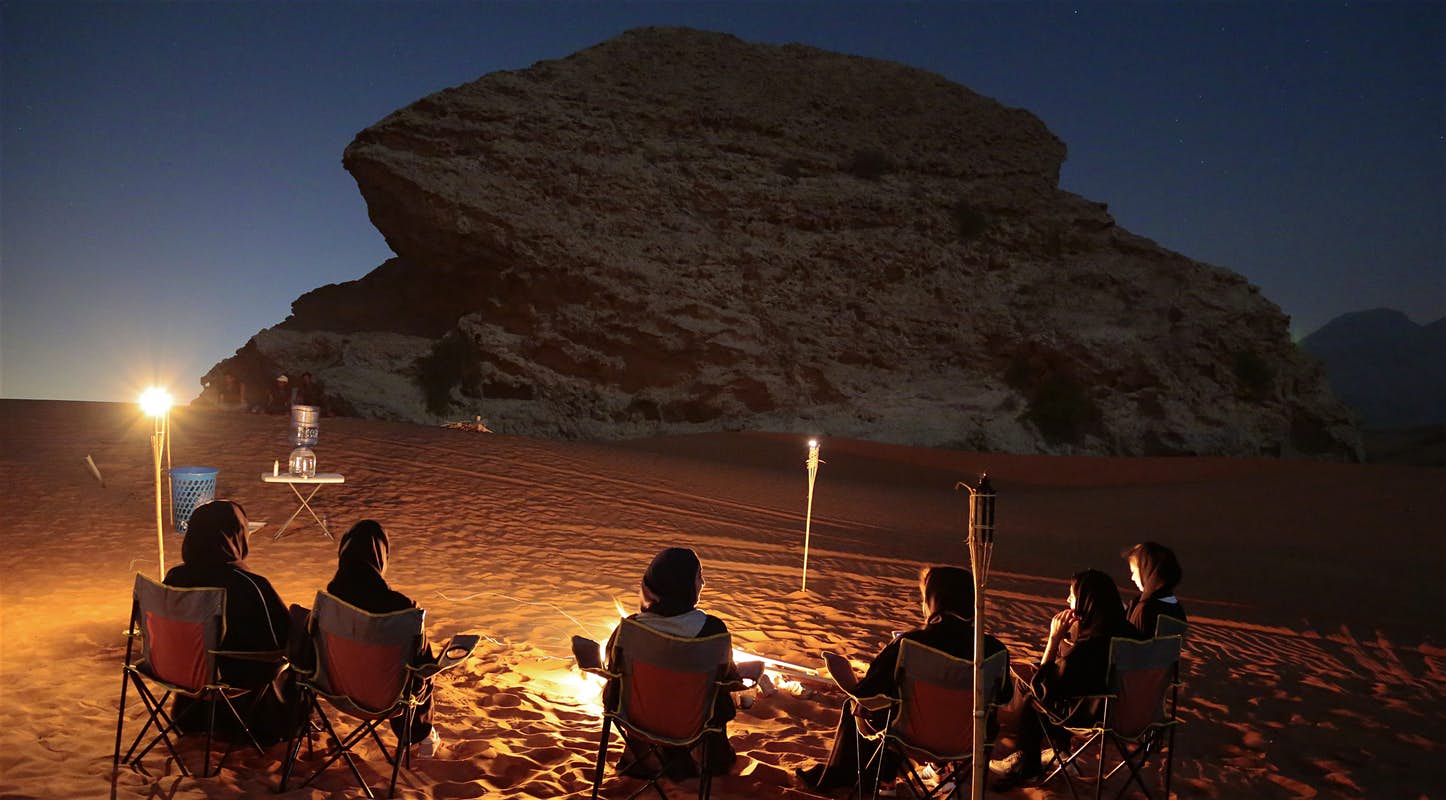Just like distant galaxies, deserts exude an aura of promise and mystery, their silent sands sheltering ancient secrets waiting to be unlocked. In the sands of Mleiha, a painterly panoply of tangerine dunes and serrated mountains in Sharjah’s Central Region, archaeologists hit the jackpot.
The best way to get from the airport into town is by taxi with rides costing about Dh60, including the Dh20 airport surcharge (ie Dh40 for the return trip). Traffic often slows to a crawl during rush hour.

Deep beneath the desert floor slumber countless relics left behind by waves of human societies going back to the Stone Age. The most spectacular finds are showcased at the Mleiha Archaeological Centre that doubles as a launch pad for thrilling desert adventures.
This treasure-trove of nature and history is an easy 65km drive southeast of the city of Sharjah. Anticipation mounts as the hum of urbanity gives way to a brilliantly hot and gorgeously forbidding landscape. Bristly ghaf trees (the UAE’s national tree) poke up from the desert floor, providing fodder for wild camels who have trimmed the lower branches as neatly as a suburban hedge.
The humble ‘Mleiha Archaeological Centre’ entrance sign belies the fact that you have arrived at one of the UAE’s most important and complex ancient sites, set against the backdrop of pink dunes and the jagged incisors of Jebel Faya (Faya Mountain). The centre itself is an architectural gem: a sinuously curving, sandstone-and-copper building that blends smoothly into the surrounding landscape. Inside awaits an insightful primer on the area and the amazing finds from the Paleolithic, Neolithic, Bronze Age, Iron Age and Pre-Islamic eras that archaeologists have dug up over the last 40 years.

A window on the past
Compact but comprehensive, the exhibit uses maps, timelines, graphics and objects to peel back these multiple layers of history in easily accessible fashion. Pride of place goes to 130,000-year-old stone axes that resemble those made in East Africa, the cradle of humanity, roughly around the same time. Their presence in Mleiha indicates that humans may have left sub-Saharan Africa earlier than previously thought, crossing the Red Sea at the end of an ice age when the channel between Africa and the Arabian Peninsula was much narrower than today. A short movie explains just how this migration might have occurred and the hospitable Savannah-like living conditions that awaited these first settlers.
Elsewhere, you get to marvel at locally minted coins, bronze knives, jewellery made from shells and coral, and a 2300-year-old tombstone bearing inscriptions in both Aramaic and South Arabian. Vases, jars and other goods imported from such places as India, Iran and Greece show that Mleiha was once an important caravan town on the overland trade route that linked the Indian Ocean with the Mediterranean. One of the most intriguing exhibits is the recreated grave of a camel and horse dressed in fine regalia and originally buried alongside their owner in a pre-Islamic ritual known as ‘baliya’.

The centre itself wraps around Mleiha’s most spectacular ancient feature, the Bronze Age Umm an-Nar tomb whose circular shape and multiple chambers are best appreciated from the rooftop viewing platform. Although only six skeletons – adorned with necklaces, rings and bracelets – were found, it may have held up to 300 bodies.
Plunging into the desert
A trip to Mleiha would not be complete without venturing out into the desert and experience its beauty first-hand. The centre offers an entire line-up of expert-led activities and adventures, from short hiking treks and stamina-challenging bike rides to thrilling dune-buggy excursions and horseback rides at sunset. Here are a few of our favourites:

Archaeological Tour
If you want to deepen your understanding of Mleiha’s place in history, sign up for the Archaeology Tour. In the comfort of an air-conditioned 4WD, you’ll first steer towards the Faya Cave, the very rock shelter where those Palaeolithic stone axes were unearthed. The tour also visits a pre-Islamic palace and fort as well as a farmhouse with a subterranean kitchen featuring circular ovens. Another highlight is a sprawling cemetery with six monumental tombs and 120 subterranean graves, some of which can be entered.

Mleiha Landscapes Tour
This mesmerising hour-long tour combines the thrill of jouncing across the undulating dunescape in a 4WD with visiting the area’s most stunning natural landmarks. First up is Camel Rock, a solitary outcrop shaped like a kneeling camel. It pops straight out of the sand and looks especially eerie when silhouetted against the moonlit night sky. The tour then climbs up to Fossil Rock, a monolith that looks like a pile of petrified popcorn from close up. It’s riddled with tiny snails, corals and other marine creatures deposited here some 65 million years ago when the area was flooded by an ancient sea. Pouring some water over the rocks makes them easier to spot. Take a moment to soak in the spellbinding view of dunes and mountains unfolding before you as far as the eye can see.

Desert Cycling Tours
If you’re the active type, you might prefer to visit all these caves, graves and ruins under your own steam with a FatBoy, a sturdy bicycle outfitted with extra-wide tires for tooling around the desert. Shutterbugs with stamina should book the Landscape Tour that will have you pedalling to spectacular vantage points for images that might send your Instagram account into a tailspin.

Sunset Lounge
As the day winds down, there are few places more peaceful than Mleiha’s Sunset Lounge, a lantern-lit desert camp where you can lounge on big-pillowed seats by a campfire, enjoy a barbecue dinner and gaze at a canopy of stars through a high-powered telescope. If you crave an even more intense desert immersion, stay overnight in a tent and savor the silent darkness before watching the rising sun set the long, deep shadows ablaze with shades from ochre to cinnamon.
Produced by Lonely Planet for Sharjah Commerce and Tourism Development Authority. All editorial views are those of Lonely Planet alone and reflect their policy of editorial independence and impartiality.

Lonely Planet
Check out my account


Share via email
Copy URL